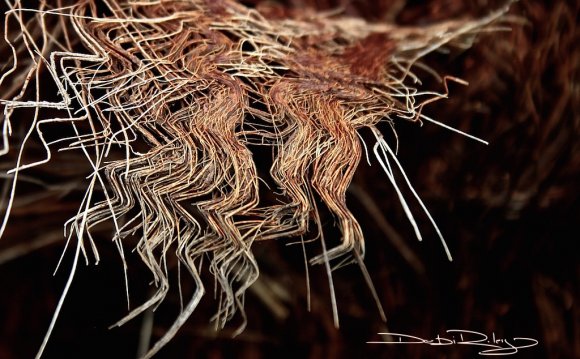
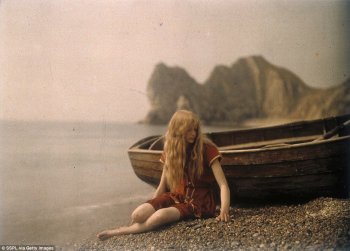 A collection of pictures of Christina O'Gorman posing for her father, electrical engineer and photographer Mervyn O'Gorman, back in 1913 have been revealed as some of the earliest colour photographs ever taken
A collection of pictures of Christina O'Gorman posing for her father, electrical engineer and photographer Mervyn O'Gorman, back in 1913 have been revealed as some of the earliest colour photographs ever taken
The ethereal images were taken on the beach at Lulworth Cove, Dorset, when Malcolm was 42
The images are part of the Royal Photographic Society, held at the National Media Museum, and are currently on display at the National Media Museum, Bradford.
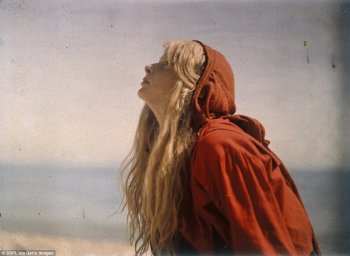 They are among a collection of the world's oldest surviving photographs.
They are among a collection of the world's oldest surviving photographs.
The woman in question was teenager Christina O'Gorman, posing for her father, electrical engineer and photographer Mervyn O'Gorman back in 1913.
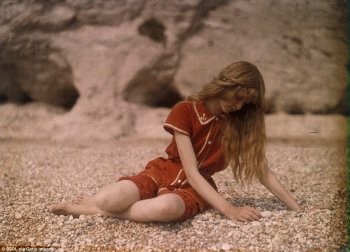 Mervyn was 42 at the time when he took the images of his daughter, who languidly sits, in an array of vibrant red outfits, including a swimsuit, a cloak and a shirt.
Mervyn was 42 at the time when he took the images of his daughter, who languidly sits, in an array of vibrant red outfits, including a swimsuit, a cloak and a shirt.
The teen, characterised by her long strawberry-blonde hair, poses in different scenarios on the beach at Lulworth Cove in the English county of Dorset and appears unaware of her father.
The delicately-coloured images are on display at the National Media Museum in Bradford
Christina is seen sitting on the Dorset beach with friends in the 102-year-old images
The strawberry-blonde teenager wore red, probably at the request of her father as the vibrant colour captured particularly well via the autochrome process
Mervyn was known as an early pioneer of colour photography and used the autochrome process to capture the haunting images.
Patented in 1903, the process involved using glass plates covered in potato starches grains to filter pictures with dye.
Mervyn was known as an early pioneer of colour photography and often used the autochrome process, which involved using glass plates covered in potato starches grains to filter pictures with dye
Christina's life remains a mystery as there are no recorded detail of the then-teen's life
The National Media Museum explained: 'The comparatively long exposure time has given the sea a glassy quality and the large aperture setting and narrow depth of field has put Durdle Door in the background into soft focus.'
The repetition of the red attire was due to the fact that the vibrant colour captured particularly well in an autochrome process.
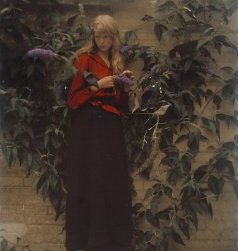

YOU MIGHT ALSO LIKE










